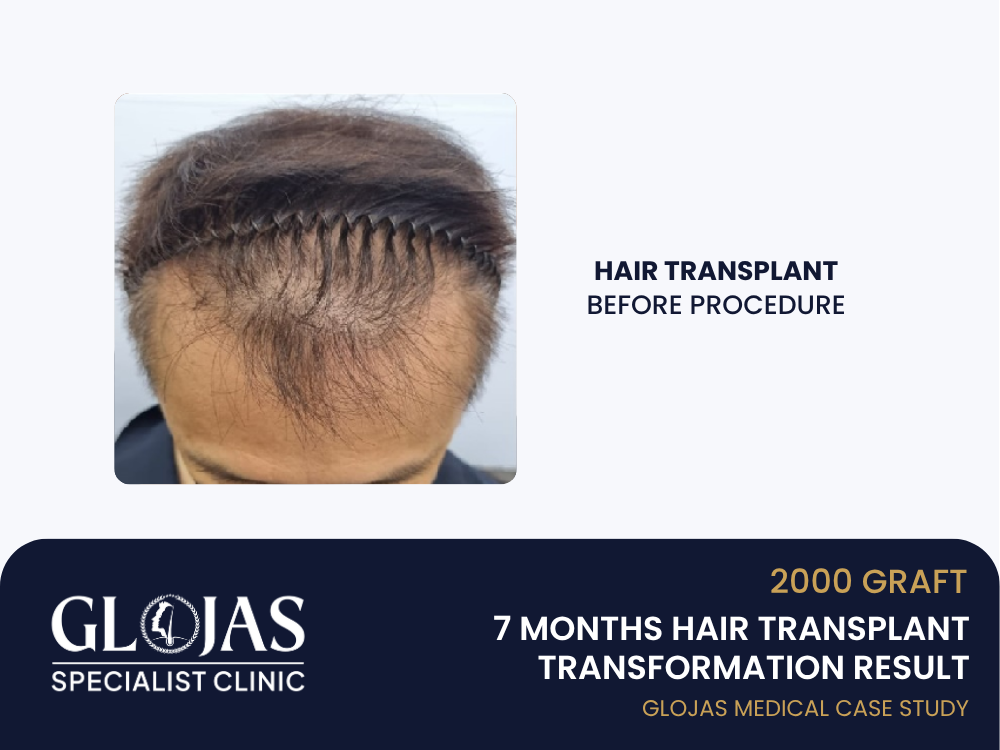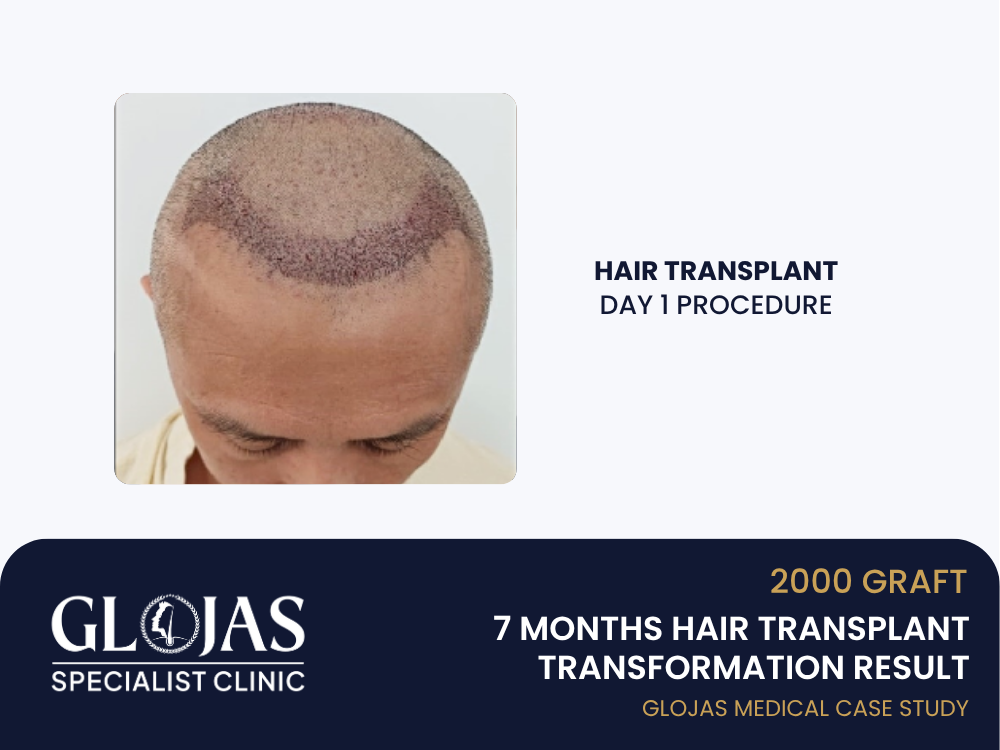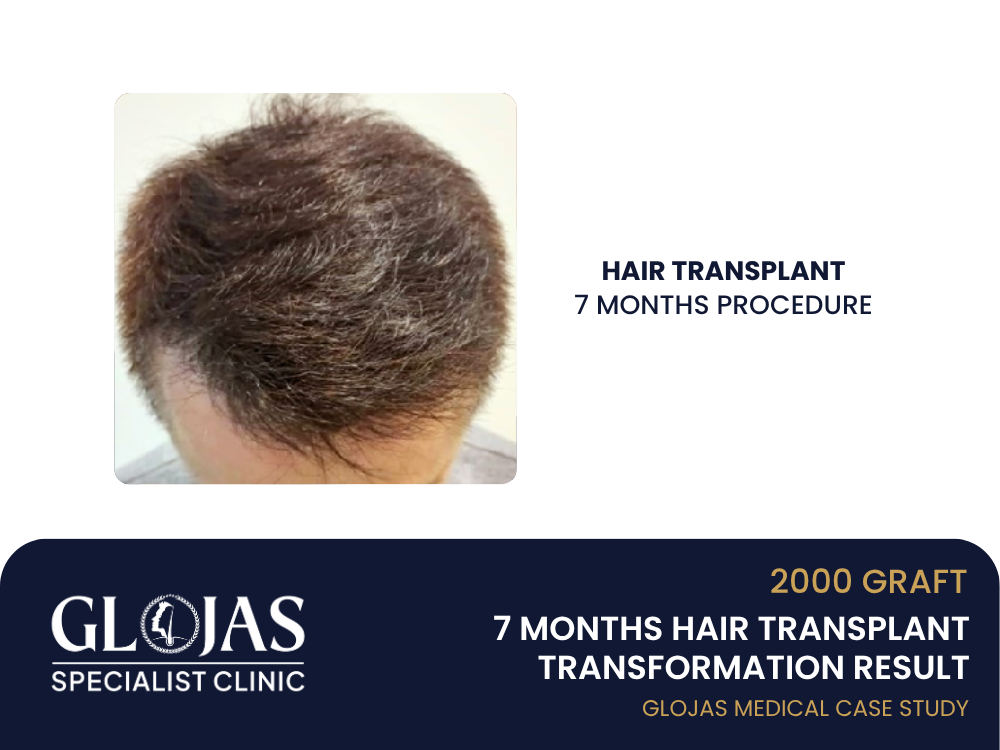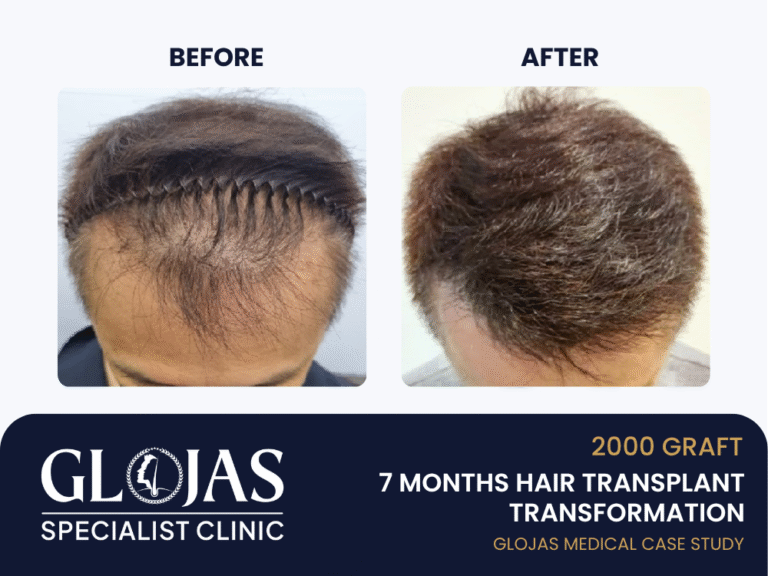A receding hairline is often the first and most noticeable sign of male pattern hair loss. For many, it not only affects their appearance but also their confidence. This case study highlights the journey of a 34-year-old male patient with Norwood Level 3 hair loss, characterized by temple recession and thinning along the frontal hairline.
With just 2,000 grafts using the SMART™ FUE hair transplant technique, he achieved a youthful, natural-looking hairline in just 7 months, with no visible scarring and minimal downtime.
Patient Overview
Name: Mr. L (identity protected)
Age: 34
Hair Loss Classification: Norwood 3
Problem Area: Receding hairline (temples + frontal zone)
Hair Type: Straight, medium density, dark brown
Donor Area: Healthy occipital scalp with good density
Goal: Restore natural, age-appropriate hairline with temple closure
Mr. L had been experiencing hairline recession for over 5 years. He had tried hair fibers and topical solutions, such as minoxidil, but the results were temporary and the coverage uneven. He wanted a permanent solution to rebuild his hairline with a natural appearance that wouldn’t reveal he had undergone surgery.
What is SMART™ FUE?
SMART™ FUE (Scalp Micro-Advanced Restoration Technique) is an advanced version of Follicular Unit Extraction, offering:
High graft survival rate (up to 95%)
Minimally invasive technique with no linear scar
Precise angle and depth control for natural growth pattern
Suitable for hairline reconstruction and temple detailing
Short recovery time and long-lasting results
SMART™ FUE hair transplant malaysia is especially effective for refining frontal hairlines, where every angle and follicle matters for visual realism.
Consultation & Hairline Design – Hair Transplant
During consultation, Mr. L expressed the desire for:
A lower, natural-looking hairline
Temple closure to reduce the “M” pattern
Results that matched his facial shape and age (not overly aggressive)
A digital trichoscopy was performed to assess hair density and scalp condition. His donor area was healthy, allowing for up to 2,000 grafts without overharvesting.
Hairline Design Considerations:
Soft, irregular pattern for natural appearance
Stronger density in the central zone, tapering toward temples
Preservation of future donor reserves
Procedure Overview

Date: Outpatient, single-day procedure
Duration: 6.5 hours
Grafts: 2,000
Zones Treated: Frontal hairline + bilateral temples
Technique: SMART™ FUE with sapphire blade
Step-by-Step:
Local anesthesia was administered to the donor and recipient zones
Extraction of 2,000 follicular units using a 0.8 mm punch
Grafts sorted: singles for frontal edge, doubles/triples for behind the line
Recipient sites created at precise angles (35°–45°) for natural flow
Implantation using micro-implanter pens for maximum accuracy
No stitches were needed, and Mr. L was discharged the same day with post-op instructions.
Post-Op Recovery Timeline

Days 1–3: Mild redness, minimal swelling
Days 4–7: Scabbing present but manageable
Week 2: Most scabs gone, no visible trauma
Week 3–4: “Shock loss” phase – temporary shedding of transplanted hair
Month 3: Initial signs of regrowth
Month 6: Noticeable thickening and structure
Month 7: 75–80% of the final result visible
7-Month Results

Mr. L returned for a follow-up at month 7. His hairline looked completely integrated with his natural hair. Even under close inspection, there were no signs of surgery.
| Zone | Before Transplant | After 7 Months |
|---|---|---|
| Frontal Hairline | “M” shaped recession, visible temples | Youthful contour, temples closed in |
| Temple Zones | Deep V recession | Filled in naturally with soft density |
| Hair Styling | Hair pushed forward to hide the loss | Open style, combed back with confidence |
| Confidence | Avoided certain hairstyles | Feels youthful and photo-ready |
Patient Feedback
“I didn’t want it to look like I had work done — and that’s exactly what I got. The new hairline looks like it’s always been there. I feel 10 years younger.”
Mr. L now wears his hair styled back confidently and regularly receives compliments about looking fresher, without people guessing why.
Maintenance & Follow-Up
Hair washing: Gentle shampoo after 7 days
No medication taken post-op (patient opted out of finasteride)
Follow-up PRP is suggested every 6 months to maintain scalp health
Next check-in: Month 12 for final photos and evaluation
5 Frequently Asked Questions (FAQ)
1. Can 2,000 grafts restore a receding hairline?
✅ Yes. For Norwood 2–3 cases, 2,000 grafts are often enough to restore the entire hairline and temples with proper hair transplant design and technique.
2. Is 7 months enough to see the final result?
Not entirely. At 7 months, 75–80% of the result is visible, but full thickness and texture maturity usually appear by 12 months.
3. Will the new hair fall out again?
No. The transplanted hair is DHT-resistant, as it’s taken from the permanent zone at the back of the scalp. It behaves like natural hair for life.
4. Will people be able to tell I had a transplant?
Not if done properly. With SMART™ FUE, the hairline looks completely natural. Friends may notice you look better, not why.
5. Can I style my new hair normally?
✅ Absolutely. Once the transplanted area has healed (after 2–3 weeks), you can cut, style, or color your hair as usual.
Final Thoughts
Mr. L’s transformation is a strong example of how SMART™ FUE hair transplant can resolve early-stage male pattern baldness with a natural and undetectable result. By using just 2,000 grafts, we redefined his facial frame, restored his confidence, and helped him regain a more youthful appearance — all within 7 months.
If you’re noticing temple recession or hairline thinning, don’t wait until it worsens. Early intervention with SMART™ FUE can help preserve your look with lasting, low-maintenance results.
